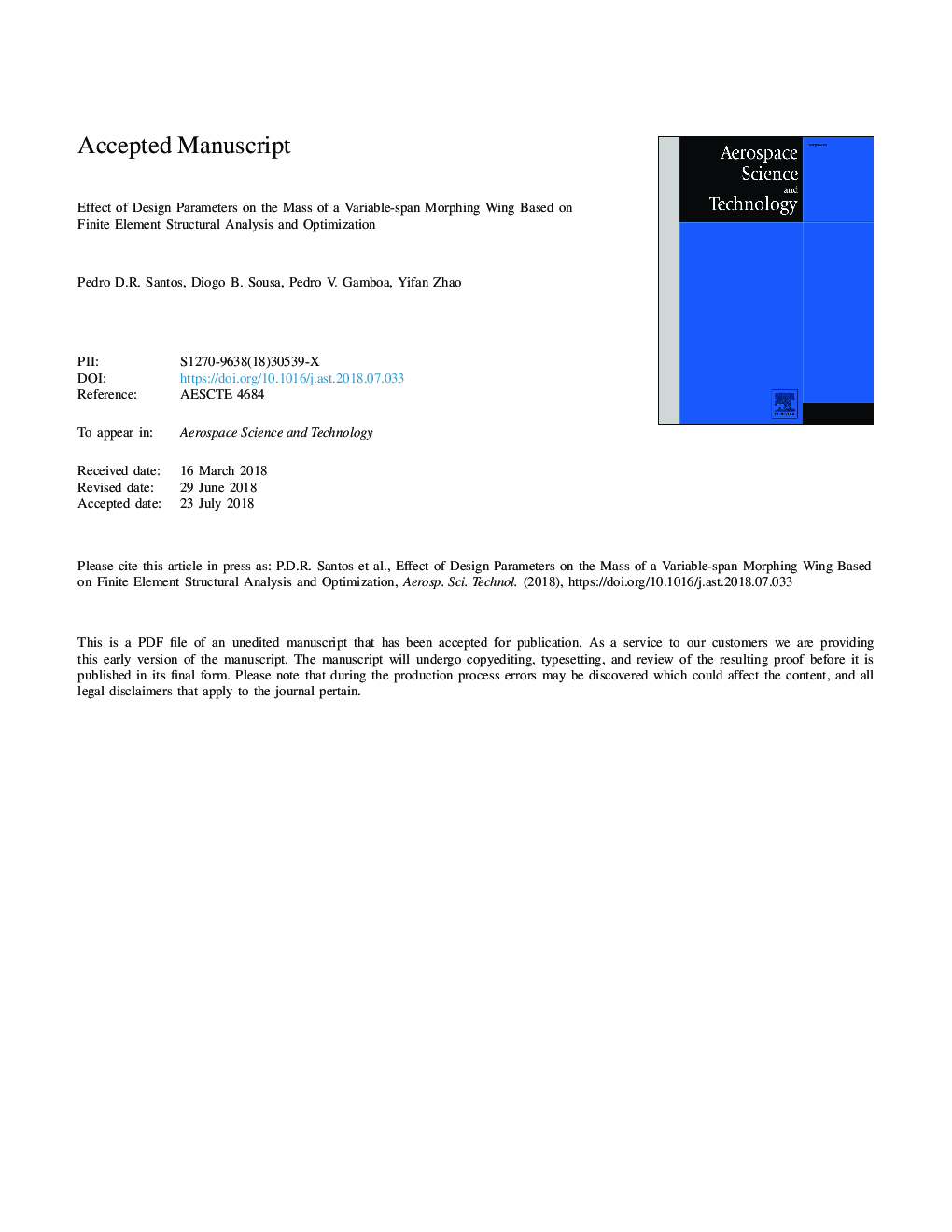| Article ID | Journal | Published Year | Pages | File Type |
|---|---|---|---|---|
| 8057322 | Aerospace Science and Technology | 2018 | 44 Pages |
Abstract
In the past years, the development of morphing wing technologies has received a great deal of interest from the scientific community. These technologies potentially enable an increase in aircraft efficiency by changing the wing shape, thus allowing the aircraft to fly near its optimal performance point at different flight conditions. However, these technologies often present an undesired mass increase due to their inherent complexity. Therefore, the aim of the current work is to ascertain the influence of geometrical and inertial parameters on the structural mass of a Variable-span Wing (VSW). The structural mass prediction is based on a parametric study. A minimum mass optimization problem with stiffness and strength constraints is implemented and solved, being the design variables structural thicknesses and widths, using a parametric Finite Element Model (FEM) of the wing. The study is done for a conventional fixed wing and the VSW, which are then combined to ascertain the VSW mass increment, i.e., the mass penalization of the adopted morphing concept. Polynomials are found to produce good approximations of the wing mass. The effects of the various VSW design parameters in the structural mass are discussed. On one hand, it was found that the span and chord have the highest impact in the wing mass. On the other hand, the VSW to fixed wing mass ratio proved that the influence of span variation ratio in the wing mass is not trivial. It is found that the mass increase does not grow proportionally with span variation ratio increase and that for each combination of span and chord, exists a span variation ratio that minimizes the mass penalty. In the future, the developed polynomials could be used to create a mass prediction model to aid the design of morphing wings during the conceptual design phase.
Related Topics
Physical Sciences and Engineering
Engineering
Aerospace Engineering
Authors
Pedro D.R. Santos, Diogo B. Sousa, Pedro V. Gamboa, Yifan Zhao,
